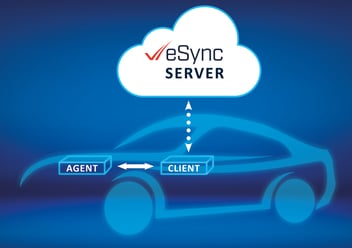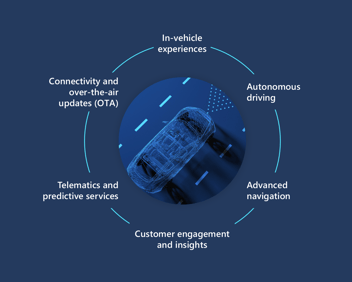What is Delta Compression? A Guide to Differential Automotive Software Updates
Over-the-air software updates are critical for today’s software-defined vehicles—but they don’t have to be slow, costly, or disruptive. Instead of pushing bulky, full images to dozens of ECUs, delta compression delivers only what’s changed. The result? Faster updates, lower costs, and minimal downtime—all backed by the security and reliability of eSync.
Think about it: sending multi-gigabyte images over cellular links wastes time, bandwidth, and budget. With delta compression, those updates shrink to a fraction of the size, turning hours into minutes and outages into uptime. And with eSync, every update flows seamlessly through a standardized pipeline, reaching the right devices across the vehicle’s complex network.

Why deltas matter more in cars than in phones comes down to complexity.
A single vehicle may include domain controllers, head units, and smart sensors from many suppliers, spanning multiple operating systems and buses—Android, Linux, QNX, Integrity, adaptive AUTOSAR, classic AUTOSAR, VxWorks, µVelOSity, and FreeRTOS on automotive Ethernet, CAN/CAN FD, FlexRay, and LIN bus, to name but a few. A one-size-fits-all mobile updater typically falls short in this environment. Purpose-built automotive delta tech must adapt to different image formats and device resources to be safe and efficient.
Enter Excelfore Adaptive Delta Compression.
Excelfore’s delta solution is integrated within eSync, so deltas are created and managed as a part of the OTA process. Deltas are computed server-side, with the platform automatically choosing the optimal algorithm based on the target’s resources, and caching results for reuse. Data integrity is protected end-to-end with secure hash algorithms (SHA) calculated at the root of trust when the payload is first loaded into the eSync server, and verification with a new SHA calculated after reconstruction and flashing of the edge device, ensuring that the entire process has provided a payload that is a bit-for-bit exact match to the original file.
The payoff is dramatic. In proof-of-concept testing on NXP i.MX6 systems across multiple code use cases, Adaptive Delta reduced the size of the payload to be transferred by up to 99%. Because reconstruction happens at the last “hop” inside the vehicle—where content can be securely decrypted—you cut wireless transfer time without compromising security. Adaptive delta compression also allows you to balance policy goals, optimising for transmission/airwave costs or reconstruction/flash time on target devices.
Under the hood, Adaptive Delta uses a combination of differential algorithms, stays agnostic to image formats, and is optimized for the target’s memory and CPU resources—crucial for smaller ECUs. A target-specific compression in the cloud can leverage device knowledge to minimize delta size within the constraints of target reconstruction resources. These design choices reflect real-world automotive constraints that general-purpose mobile delta updaters don’t address. (There’s serious IP here too—U.S. Patent 8,949,466.)
Because Adaptive Delta is embedded in Excelfore eSync OTA, you also inherit the platform’s strengths: a standard OTA software data pipeline that reaches diverse in-vehicle devices, and cloud-to-edge orchestration that aligns with the industry’s push toward seamless OTA software updates as vehicles become more software-defined vehicles. That ecosystem—spanning the eSync Alliance and its partners—prioritizes communication standardization for OTA, ensuring your update workflows scale safely as software content grows.
The bottom line: for automotive OTA teams, delta compression isn’t a nice-to-have; it’s foundational. Excelfore’s Adaptive Delta compression integrated into eSync slashes data costs, accelerates rollouts, and respects the realities of multi-ECU vehicles running mixed networks of CAN and automotive Ethernet. If you’re building the next generation of software-defined vehicle, make deltas the default—and let eSync from Excelfore do the heavy lifting.
Conclusion
In the world of connected mobility, full-image updates are no longer sustainable. Delta compression is proving to be the more innovative, faster, and more cost-efficient way to manage OTA software updates across diverse vehicle systems. Integrated with eSync, it provides automakers with a standardized, secure, and scalable way to keep pace with the growing complexity of software-defined vehicles.
Ready to cut update times, reduce costs, and streamline your OTA software strategy?



Leave a Comment